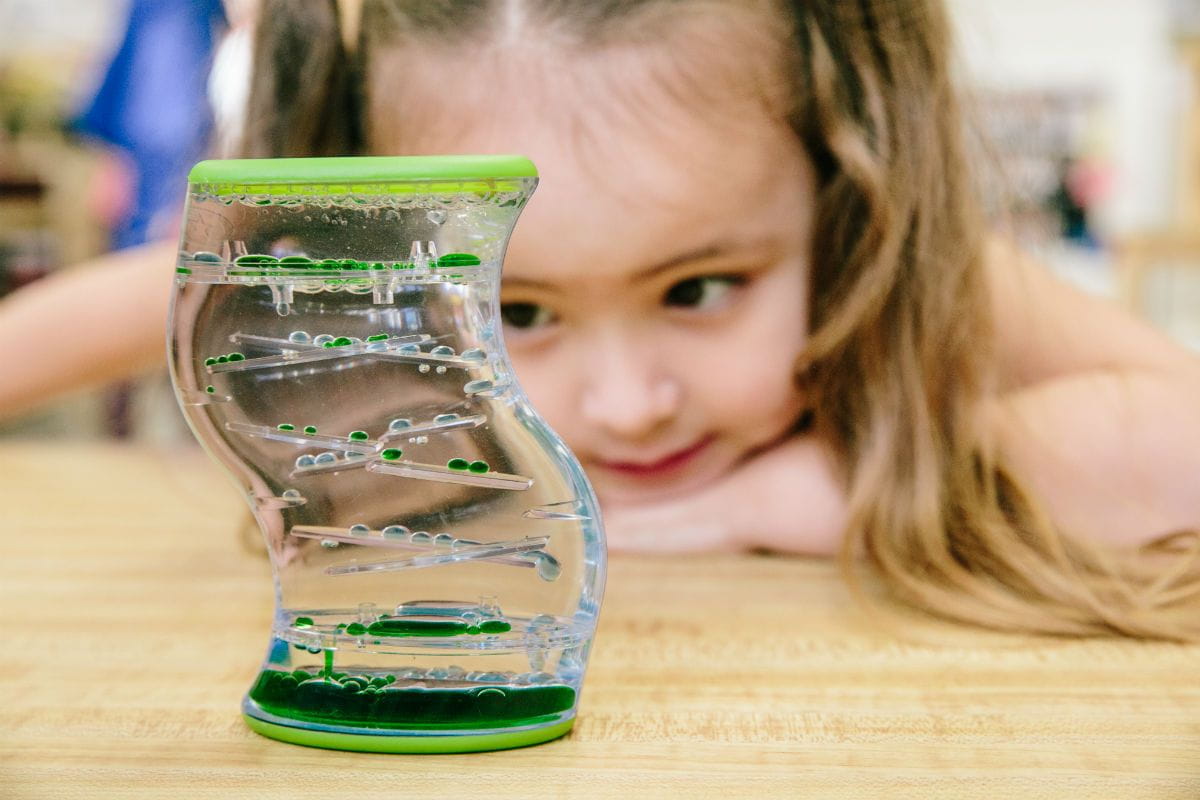Time to Go! How to Make the Whole “Five-Minute Rule” Actually Work

By Carolyn Sweeney Hauck
“Caden, you have five more minutes!”
“No dada, I don’t want to leave the park!”
If you haven’t had success with the “five-minute rule,” there’s a reason why it doesn’t often work. “For many young children, five minutes could be an hour or it could be five seconds,” says KinderCare’s Taunya Banta, manager of Individualized Education Services. “Until a child is able to discern the difference between one minute and ten minutes, around age four or five, a five-minute warning may cause more confusion than provide clarity.”
Luckily, there’s a simple tool that can help young children understand the concept of time: visual timers. Turn the timer upside down, and mesmerizing, colorful blobs of oil fall one by one down a series of ramps. And when they reach the bottom? Five minutes is up! They may seem simple, but visual timers are powerful because they help children associate a concrete and tangible thing (the colored blobs traveling to the bottom of the timer) with the abstract concept of time.

Visual timers have another advantage: making transitions easier for children. “Just when he’s deep in a beloved activity, here comes an adult to tell him it’s time to clean up, leave the sandbox, or wash his hands for dinner,” says Banta. “Seen through a child’s eyes, it can be super frustrating!” Not to mention, being able to mentally adjust to changes isn’t something children are born with—it’s an executive function skill that has to be developed in early childhood. But when children can see time (literally) marching ahead, it makes transitions less abrupt. And, because kids can see when, say, it’s time to clean up the blocks themselves, they are less likely to be ordered around by adults—which is a great thing for them. “Timers help children feel more empowered and independent because rather than simply being told what to do, they feel like they are part of a process,” Banta says.
That’s why so many KinderCare teachers use timers to help children change activities in the classroom. But don’t think this is a classroom-only tool—a visual timer can be just as effective at home when you need your child to put away the play dough and come to dinner, or to get him out the door to make it to that play date on time.
We think the timers we use in our centers are the tops, but they come in all shapes, sizes, and time scales, including this five-minute sand timer, this oil-and-water version, or this entrancing timer with little fish tucked inside. Some are even small enough to fit in your purse or tuck in the glove compartment, which can be handy when you’re out and about with your family.
As our educators can attest, some children also love a good game of “beat the clock.” Do you think you can clean up your art supplies before the droplets all fall to the bottom of the timer? “Try it! It can be a major motivator!” Banta says.




.jpg?la=en&h=800&w=1200&hash=799F5BD6E84A71FB0D1C8E657FE7F226)
